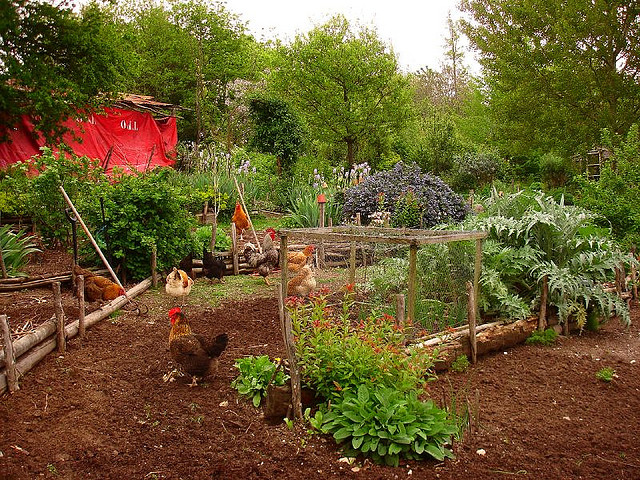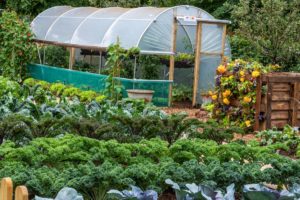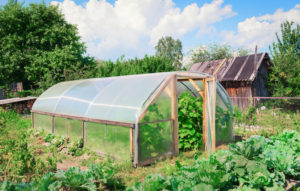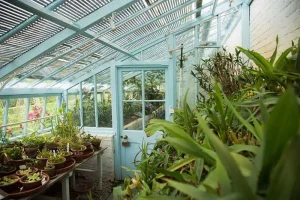Growing your own herbs can be a rewarding and cost-effective way to add fresh flavor to your meals, all while enjoying the benefits of off-grid living.
However, traditional monoculture garden layouts can lead to soil depletion, pest issues, and decreased biodiversity.
That’s why we recommend exploring polyculture techniques for your herb garden – a type of permaculture design that combines multiple plant species in one bed for maximum efficiency, yield, and resilience.
We’ll dive into the ins and outs of creating a successful polyculture layout for off-grid herb gardening, including how to choose compatible plants, optimize space usage, and promote soil health.
Understand the concept of polyculture
Polyculture refers to the practice of growing multiple crops together in the same space. This approach can increase biodiversity, reduce pests and diseases, and create a more resilient and sustainable garden.
By creating a diverse and complex ecosystem, polyculture can significantly increase biodiversity, thereby reducing the risk of pests and diseases.
This is because different plants have different predators and prey, and by growing multiple crops together, you create a more stable and balanced ecosystem.
Polyculture can improve soil health and fertility, as different plants have different nutrient requirements and can complement each other’s needs.
This approach can also increase yields and create a more resilient and sustainable garden, as polyculture systems are better able to adapt to changing environmental conditions and pests.
Furthermore, polyculture can also help to reduce the need for external inputs such as fertilizers and pesticides, as the diverse system promotes natural balance and stability.
Overall, incorporating polyculture into your gardening or farming practices can lead to a healthier, more sustainable, and more productive agricultural system.
Choose the right herbs
Select herbs that are well-suited to your climate and the specific growing conditions of your off-grid garden. Consider factors such as sunlight, soil type, and moisture levels when choosing herbs.
When selecting herbs for your off-grid garden, it’s important to consider the climatic conditions and specific growing conditions of your region.
Different herbs thrive in different environments, and some may require more specific care than others.
For example, if your garden receives full sun, you may want to choose herbs like basil, chamomile, and lemon balm that prefer warmer temperatures and direct sunlight.
On the other hand, if your garden is partial shade, you may want to opt for herbs like mint, oregano, and thyme that can tolerate more moisture and partial shade.
If your soil is heavy clay or sandy, you may need to adjust your herb selection accordingly.
For instance, herbs like lavender and rosemary prefer well-draining soil, while herbs like sage and rosemary can tolerate a range of soil types.
By selecting herbs that are well-suited to your climate and growing conditions, you can ensure a productive and thriving off-grid garden.
Plan your layout
Before planting, take the time to plan your layout. Consider the mature size of each herb variety, their growing habits, and their nutrient and light requirements.
Before you begin planting, take the time to plan your layout carefully.
Consider the mature size of each herb variety, their growing habits, and their nutrient and light requirements.
This will help ensure that your herbs receive the right conditions to thrive and reach their full potential.
For example, some herbs like basil and cilantro are compact and can be planted closely together, while others like mint and lemon balm can spread more aggressively and need more space.
By planning your layout accordingly, you can prevent overcrowding and ensure that each herb has enough room to grow.
You can group herbs with similar light and nutrient requirements together to make it easier to provide the right conditions for all of your herbs.
With a little advance planning, you can create a thriving and productive herb garden that will reward you with bountiful harvests for years to come.
Use companion planting
Companion planting is the practice of growing different plants together to enhance their growth and health. For example, basil and mint can be planted together to enhance their fragrance, while marigolds and nasturtiums can help deter pests.
Companion planting is a powerful technique for enhancing the growth and health of your garden.
By selecting the right combinations of plants, you can create a symbiotic relationship that benefits all the plants involved.
One classic example is planting basil and mint together, as the fragrance of the basil will enhance the scent of the mint, while the mint will help to repel pests that might be attracted to the basil.
Another great combination is marigolds and nasturtiums.
The marigolds will provide a natural barrier against nematodes, while the nasturtiums will deter aphids and other pests.
The colorful flowers of the nasturtiums will add a pop of color to your garden, creating a visually appealing and healthy growing environment.
By incorporating these and other companion planting combinations into your garden, you can promote a balanced and thriving ecosystem that will reward you with bountiful harvests and beautiful blooms.
Incorporate flowers and nitrogen-fixing plants
Incorporating flowers and nitrogen-fixing plants, such as beans and peas, can increase the biodiversity of your polyculture layout and attract beneficial pollinators and insects.
Incorporating a variety of flowers and nitrogen-fixing plants, such as beans and peas, into your polyculture layout can not only increase the biodiversity of your garden, but also attract a multitude of beneficial pollinators and insects.
These plants provide valuable ecological services, such as pollination, pest control, and soil health improvement.
For example, beans and peas are legumes that fix nitrogen from the air into the soil, providing a natural source of fertilizer for other plants.
In addition, they attract beneficial insects like lady beetles and lacewings, which prey on pests that might otherwise harm your crops.
Meanwhile, flowers like sunflowers and zinnias attract beneficial pollinators like bees and butterflies, which are essential for fruit set and crop production.
By incorporating a diverse array of flowers and nitrogen-fixing plants into your polyculture layout, you can create a thriving ecosystem that is both productive and resilient.
Use raised beds
Raised beds can help improve drainage, aeration, and soil quality, which is particularly important for off-grid herb gardens that may have limited access to resources.
Raised beds can be a game-changer for off-grid herb gardens, particularly when it comes to drainage, aeration, and soil quality.
Unlike traditional flat garden beds, raised beds offer improved drainage and aeration due to their elevated height and contained soil volume.
This means that water and air can move more freely throughout the soil, allowing roots to grow stronger and healthier.
Raised beds can be filled with a high-quality, well-draining soil mix that is tailored to the specific needs of herbs.
This can help to improve soil fertility and reduce the risk of soil-borne diseases, leading to healthier and more productive herb growth.
By investing in raised beds, off-grid herb gardeners can ensure that their plants receive the best possible growing conditions, even in challenging environmental conditions.
Harvest and prune regularly
Regular harvesting and pruning of herbs can help keep them healthy and prevent overcrowding. This can also promote biodiversity and ensure a continuous supply of herbs.
Regular harvesting and pruning of herbs are essential practices that help keep these plants healthy and thriving.
By regularly harvesting herbs, you can prevent them from becoming overcrowded and promote healthy growth.
Overcrowding can lead to reduced yields, lower quality herbs, and an increased risk of disease and pests.
Pruning herbs also helps maintain their shape, promote biodiversity, and ensures a continuous supply of herbs.
When you prune your herbs, you encourage new growth, which can increase the overall yield of your herb garden.
Regular pruning can help prevent the spread of disease and pests, as it reduces the amount of vegetation that can harbor harmful organisms.
By incorporating regular harvesting and pruning into your herb gardening routine, you can promote healthy growth, maintain a diverse and thriving ecosystem, and enjoy a continuous supply of fresh herbs.
Use cover crops
Cover crops, such as clover and vetch, can help enrich the soil, suppress weeds, and attract beneficial insects. They can be incorporated into the polyculture layout and used as mulch around the herb plants.
Cover crops like clover and vetch are invaluable assets in any polyculture garden.
These leguminous crops enrich the soil by fixating nitrogen, improving its fertility, and enabling better growth for the herb plants.
They also suppress weeds, reducing the need for tillage and other maintenance practices that can disrupt the soil ecosystem.
Clover and vetch attract beneficial insects such as bees and butterflies, promoting pollination and contributing to a healthy and biodiverse ecosystem.
By incorporating these cover crops into the polyculture layout, gardeners can create a living mulch that protects the soil and supports the growth of their herbs.
When planting clover or vetch as a cover crop, it is essential to choose the appropriate variety for your region and climate, and to sequence the planting with other crops to maximize their benefits.
Want More? Dive Deeper Here!
Hey there! If you’re the type who loves going down the rabbit hole of information (like we do), you’re in the right spot. We’ve pulled together some cool reads and resources that dive a bit deeper into the stuff we chat about on our site. Whether you’re just killing time or super into the topic, these picks might just be what you’re looking for. Happy reading!






